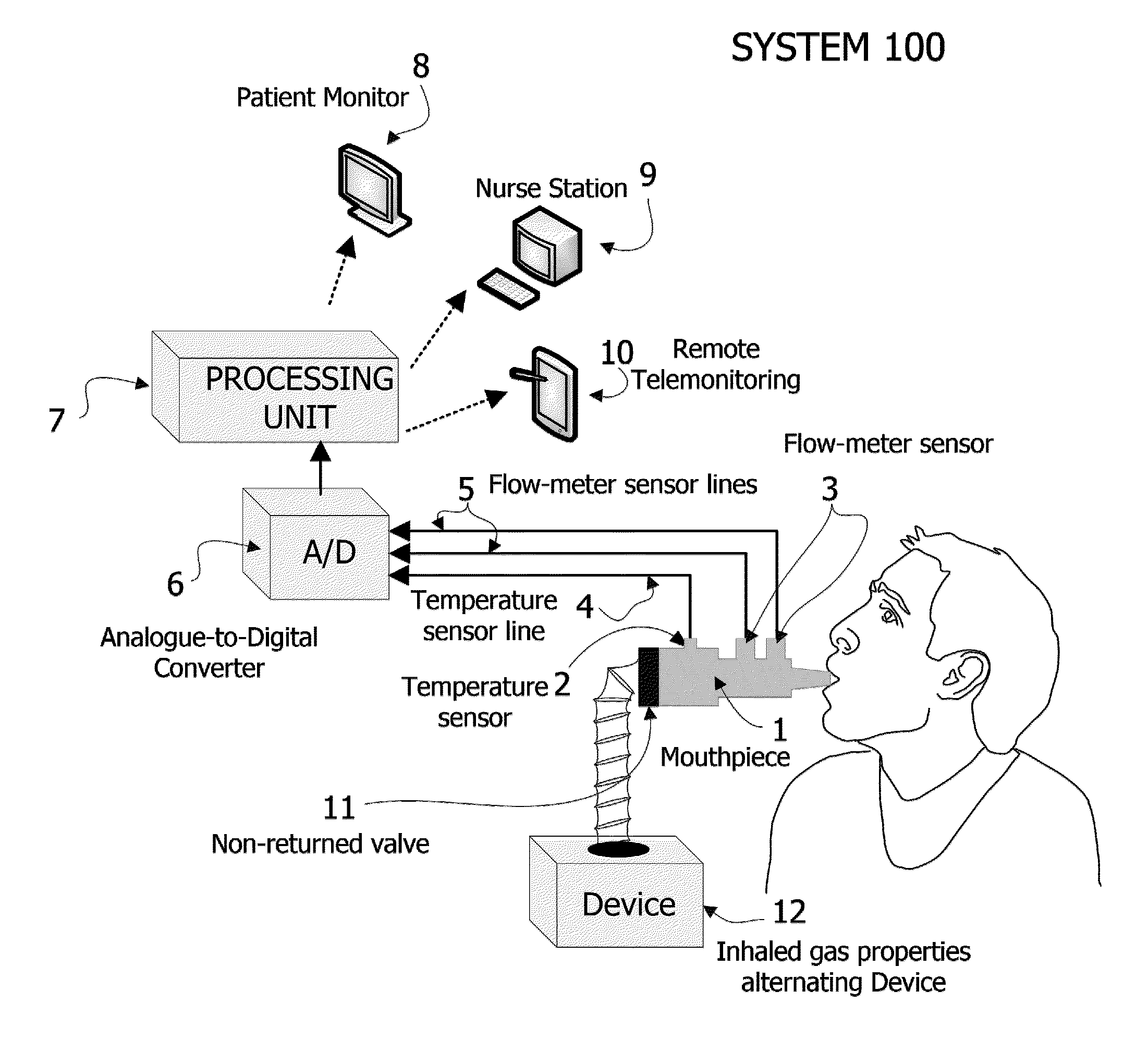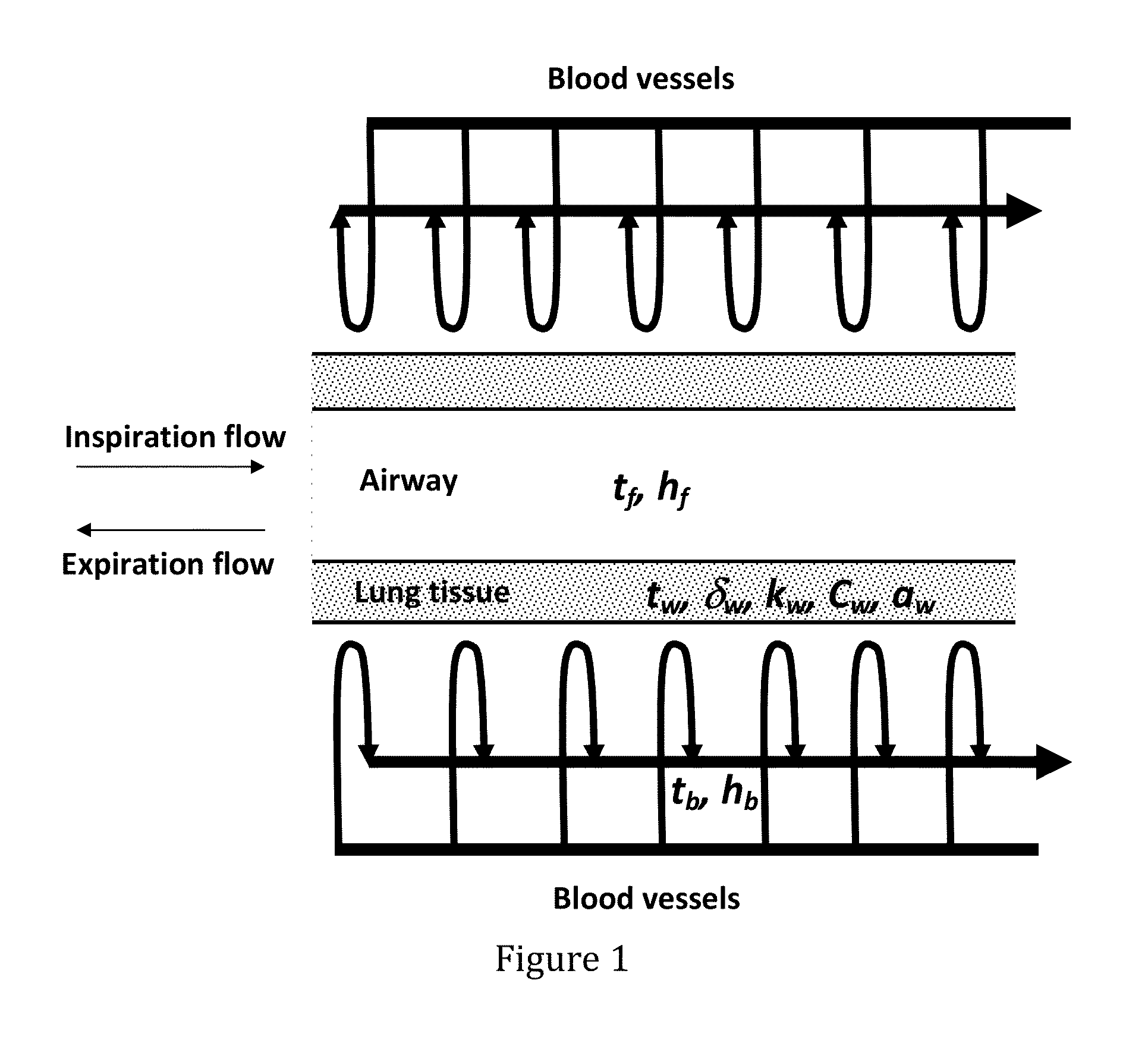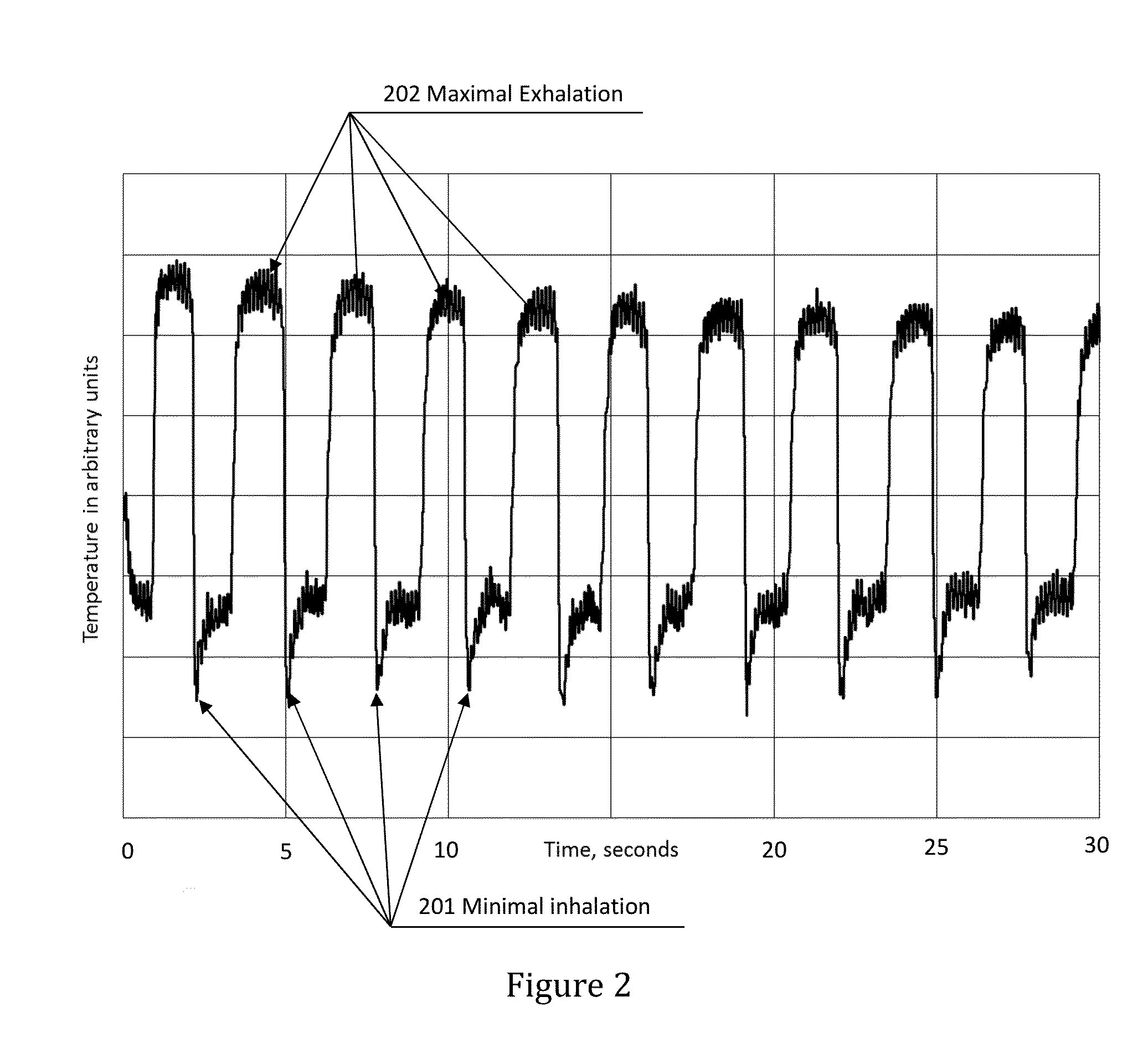Non-invasive method and apparatus for determining lung tissue thermal properties and for extra vascular lung water measurement
a lung tissue and thermal property technology, applied in the field of non-invasive methods and apparatus for determining lung tissue thermal properties and for extra vascular lung water measurement, can solve the problems of reducing lung compliance and ultimately respiratory failure, cumbersome and expensive methods, and methods that have not gained general acceptance, and achieve the effect of effective us
- Summary
- Abstract
- Description
- Claims
- Application Information
AI Technical Summary
Benefits of technology
Problems solved by technology
Method used
Image
Examples
Embodiment Construction
[0035]FIG. 1 show s a scheme of lung's heat exchanger, in accordance with some embodiments of the disclosed subject matter. Human lungs serve as gas-exchanger and as body-environment heat-exchanger as well, where the heat is transferred from blood flow to airflow through lung tissue. The pulmonary blood flow is considered as heat source, and the breathing airflow is considered as the coolant. The air flow dissipates heat from the walls of the conductive airways and alveoli, with convective heat transfer coefficient hf, which depends on the airways' wall tissue surface properties and gas flow rate. The rate of heat conductivity through the wall is characterized by diffusivity coefficient aw, which is expressed through thermal conductivity coefficient kw, density ρw and specific heat capacity coefficient Cw of a wall—i.e. on the thermal properties of the lung tissue.
[0036]The thermal resistance of heat flux from the blood flow−1 / hb—is approximately in ten times less than thermal resis...
PUM
 Login to view more
Login to view more Abstract
Description
Claims
Application Information
 Login to view more
Login to view more - R&D Engineer
- R&D Manager
- IP Professional
- Industry Leading Data Capabilities
- Powerful AI technology
- Patent DNA Extraction
Browse by: Latest US Patents, China's latest patents, Technical Efficacy Thesaurus, Application Domain, Technology Topic.
© 2024 PatSnap. All rights reserved.Legal|Privacy policy|Modern Slavery Act Transparency Statement|Sitemap



